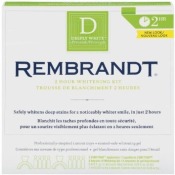
White teeth. Everybody wants them. A sign of health and beauty for centuries, a dazzling smile has always been either up to genetics or an eccentric penchant for eating nothing but cauliflower. These days, the toothpaste shelves at the drugstore are heavily stocked with at-home whitening strips and kits. But do they work?
Well, yes. That’s the short answer. “Yes and no” is the long answer. They do work, but only if:
1: You have all-natural, healthy teeth (whiteners don’t work on caps, crowns, or false teeth).
2: The stains are yellow-based surface stains. If your are stains are more greyish, which could be due to antibiotics you were given at some point, at-home whiteners won’t work very well. For grey stains, ask your dentist for whitening options.
3: Your gums aren’t inflamed.
4: You don’t lose interest halfway through at-home whitening process (ahem, like me).
The Culprits
What are the things that really stain teeth, anyway? According to Dr. Carolyn J. Mordas, the Associate Director of Product Development for Johnson & Johnson Consumer Companies, there are actually a lot of surprising foods and drinks that cause stains to accumulate on our enamel. “Coffee, tea, wines, and fruits are all culprits, including light wines and teas. The biggest immediate stainers are coffees, teas, dark sodas, and berries,” she says.
Ok, I feel like we knew about coffee and dark sodas, but sorry, light wines? ’Scuse me? It turns out that while red wine is the wine most likely to cause stains, white wine is actually more acidic, which speeds the staining process. Great. You know what else is really acidic and can speed up stains? Orange juice. And you know what the absolute worst thing you can drink with orange juice? Coffee, one of the most acidic (if delicious) stainers out there. So. Brunch, anyone?
Tips and Tricks for At-Home Whitening
We’re left with a few choices. We can either stop drinking and eating the things that stain our teeth, drink all staining liquids through a straw (to help them avoid contact with our tooth enamel), pay lots of money ($250–$500!) for dental office treatments, like ZOOM!, or get some at-home strips and go to town. I don’t know about you, but I’m not about to stop drinking coffee or orange juice or win (and I’m not about to drink hot coffee or wine with a straw). Since I’m also cheap, dental office whitening is probably not happening for me. At-home it is.
At-home whitening kits are generally considered safe by dentists, meaning they don’t damage the enamel of your teeth if used correctly. However, if you go nuts with the strips and whiten your teeth way more than necessary, like more than twice a year, you can damage the enamel. So don’t do that.
The strips and kits are generally pretty easy to use, and not too annoying to put on. But they do take a small chunk out of your day, anywhere from 20 minutes to two hour, when you can’t be actively be eating or drinking anything (which is really hard for me). But once that time limit is up, you shouldn’t leave them on any longer than the box suggests. If you’re thinking, “But wearing the strips longer means my teeth will get whiter!”, well, it’s not a great idea. It’ll just make your teeth sensitive and irritate your gums.
If your teeth ache a little bit after putting on strips, don’t panic. It goes away in a few days. There’s really no way to prevent tooth sensitivity. But if you’re really sensitive to it, do the strips on your teeth every other day instead of every day until you get through the box. (See Featured Products below for a couple of our picks.)
Preventive Measures
After you’ve gone through the process, there are a few simple tricks professionals suggest to keep your smile shining bright.
• Use whitening toothpaste. Any kind of whitening paste will help teeth stay whiter, longer, but those with baking soda are especially effective.
• … and whitening floss. The murky depths between your teeth can get yellowish stains, too. A whitening floss can help eliminate them for an all-over bright smile.
• Consider an electric toothbrush. The thousands of whirrs per minute that an electric toothbrush offers help to bust up surface stains and polish teeth to a pearly finish.
If your teeth aren't responding to at-home treatment, you may have really deep-set stains. Talk to your dentist to determine if a professional whitening treatment, such as Zoom!, could be for you.









